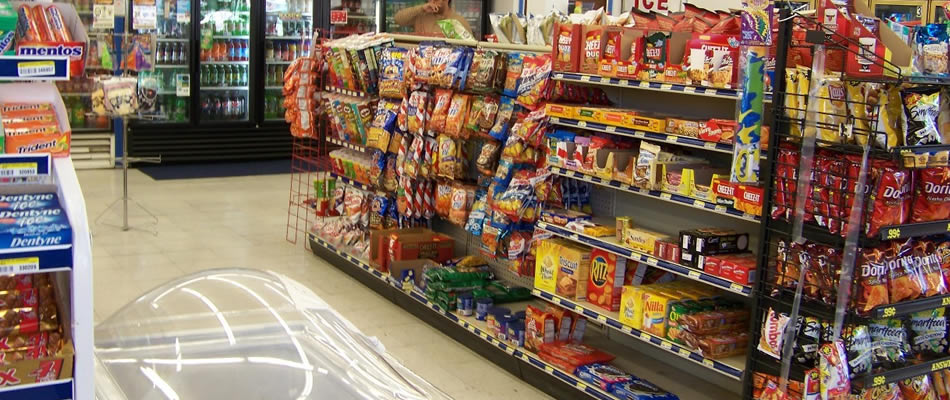How Important Is Product Placement In C Stores?
Product placement is uber critical to the successful of any retail industry, especially the fast moving consumer goods (FMCGs) industry. Product placement has the power to influence the buying choices of customers and there is clear scientific evidence behind this mechanism. The location of a product in a store can be the difference between selling 5 units and selling a 1000 units.
There are numerous different factors that go into deciding product placement such as the age of customers, the location of lighting, the behavioral patterns of customers, companies promoting their products, the type of bestsellers, the size of the store, and other relevant factors. Product placement becomes even more significant when the customer has to reach out for the product. The way products are shelved, their shelf facings, affects consumer purchasing behavior. Based on how successful a product is, can be, or is promoted, a convenience store manager will decide the location of placement.\
The importance of planograms
The planogram of a product is key to everything. The definition of a planogram is a “model or a diagram that indicates the placement of retail products on shelves to maximize their sales.” Every time you go into a convenience store, you are basically looking at a planogram. Planogramming has a number of different attributes, but the primary motive is to magnify sales and influence customer buying choices.
The factors that influence planogramming include the size of the shelf, the width of the aisle, the height of the store, the quality of lighting, and various other factors that the layman would find trivial. The success of planogramming depends upon getting the details right and influencing the would be buyer in a very subtle manner to make him or her spend that extra $50. Planograms are directly related to the success of a store, and it is little wonder that companies pay hundreds of dollars to ensure that their products are shelved appropriately in retail spaces.
Eye level facing products typically sell better
In a supermarket, how often do you need to bend down to your ankle or waist level to get a product you want? You might be surprised to find out that it doesn’t happen often, especially in large departmental stores. Various studies have shown us that on average people are far more likely to purchase a greater degree of products at eye level rather than at a higher level, or waist level, or ankle level.
A common phrase in the retail industry is “eye level is buy level.” Products at eye level are literally more likely to catch your eye, providing such products with more visibility than products at waist level or ankle level. It is not uncommon to find new products or the store’s own products being stored at eye level. Convenience stores and grocery stores typically charge premiums for manufacturers seeking to promote their products at the eye level.
Placing products at the beginning or end
A lot of convenience stores make premium sales of products that are placed right at the entrance of a store, just near the location of the trolleys. The see first, buy first strategy is a time proven strategy that immediately influencers buyers as they come inside the store. You can place your newest products at these ends to ensure profitability. For your most successful products, it may not be a smart idea to place them at these strategic locations as they are likely to sell regardless of location.
Essential products or successful products are more likely to be placed near the end due to a few simple reasons. You are more likely to buy products such as eggs, bread, fruits etc. so these products don’t require a prime location. Instead, they can be placed at the far end of a store to great effect. This is because when you need to walk so much to get these products, your attention is invariably drawn to the products you are passing by, products that are not so essential in nature.
This is one of the most popular and successful ways to subtly influence buying patterns. Remember that one time when you went to the store to purchase some eggs, but came back with an assortment of products you had no intention of buying? You can blame those devious retail managers!
The number of facings of a product
The number of facings of a product has an incredibly high impact on its levels of sales. The higher the facings, the more visible a given product is, and higher visibility almost always contributes to higher sales. The location of the product in an aisle is also crucially important. Products don’t always need to be placed at the beginning of an aisle to be successful and the size of your store plays a big role in determining the number of facings multiple different products can have.
Designing a good planogram is essential for success
Developing a planogram sounds easy on paper, but it is rarely so. Do you put complementary goods or substitute goods together? Do you similarly priced products or differently priced products together? Do you mix hig quality and low quality products? Do you mix popular and unpopular products? Supermarkets have been striving to develop perfect algorithms to solve these problems for decades.
Ultimately, a planogram needs to meet the needs of a customer and the needs of a store. Developing a system that suits both parties is tricky, which is store managers need to be experts in visual merchandising and consumerism. Retail store managers are constantly looking to exploit high street marketing techniques and continual study of consumer buying patterns is a necessity. New convenience stores should ideally hire an expert who can assist them in the process of developing successful planograms. You need to keep understanding the trends of your store and evolving in response to those trends to make the most of your stock.
